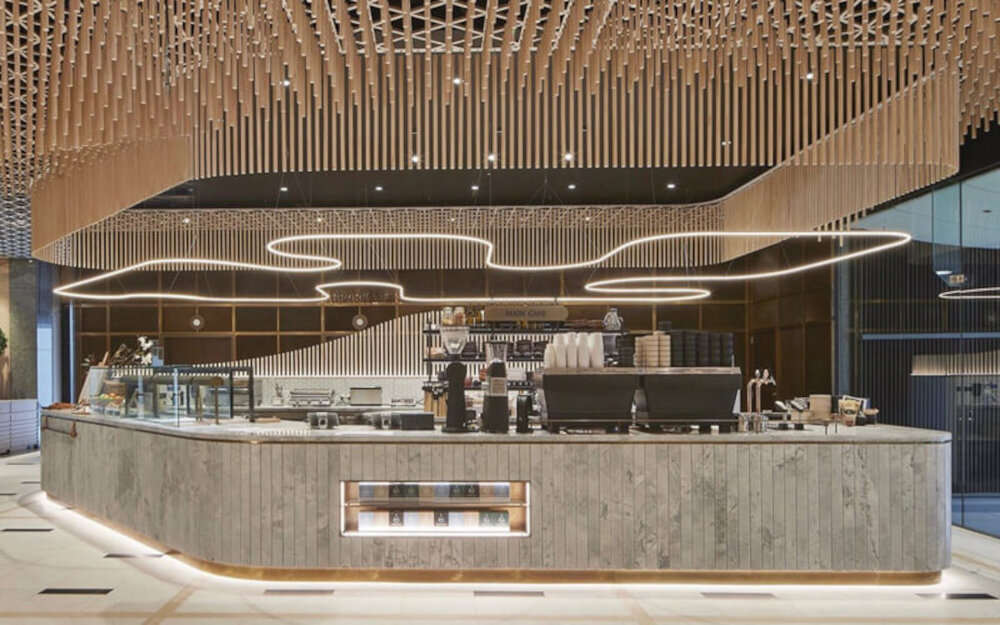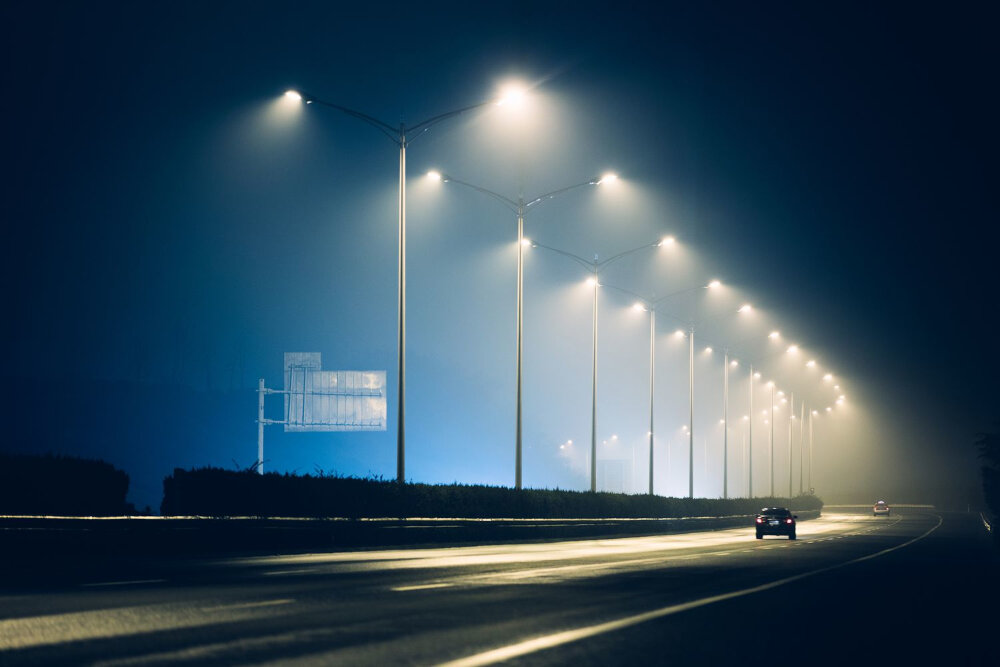LED Light Bulbs: The Ultimate Guide to EnergyEfficient Lighting

LED light bulbs have revolutionized the lighting industry in recent years. They are not only energy-efficient but also cost-effective, long-lasting, and environmentally friendly. Unlike incandescent bulbs, LED bulbs don’t waste energy by producing heat, making them a popular choice for homeowners and businesses alike. However, with so many options available, it can be overwhelming to choose the right LED bulb for your needs. This comprehensive guide will provide you with all the information you need to know about LED light bulbs, from their benefits to their different types and how to choose the right one for your space. LED light bulbs are a game-changer when it comes to lighting technology. They use up to 80% less energy than traditional bulbs, making them a sustainable and cost-effective choice. LED bulbs are also incredibly durable, with a lifespan of up to 25,000 hours, which is 25 times longer than incandescent bulbs. Not only do they save you money on your energy bills, but they also require less frequent replacement, reducing waste and saving you money in the long run. In this guide, we’ll explore the benefits of LED light bulbs in more detail, including their energy efficiency, longevity, and environmental impact.
What are LED Light Bulbs?

LED light bulbs are energy-efficient lighting systems that use light-emitting diodes (LEDs) to produce bright light. Compared to traditional incandescent bulbs, LED bulbs consume much less energy and have a longer lifespan. LEDs are semiconductor devices that produce light when a current flows through them. They are highly efficient in converting electrical energy into light energy, and they do not produce as much heat as incandescent bulbs. LED bulbs are available in a variety of shapes and sizes, and they can be used for a wide range of applications, from home lighting to automotive lighting and outdoor lighting. One of the main advantages of LED light bulbs is their energy efficiency. They consume much less energy than traditional incandescent bulbs, which means they can help reduce energy bills and lower carbon emissions. LED bulbs also have a longer lifespan than incandescent bulbs, which means they do not need to be replaced as frequently. This makes them an ideal choice for businesses and homeowners who want to save money and reduce their environmental impact. Additionally, LED bulbs are available in a range of color temperatures, from warm white to cool white, and they can be dimmed to create a range of lighting effects.
LED light bulbs are a modern and energy-efficient lighting solution that has revolutionized the lighting industry. These bulbs utilize light-emitting diodes (LEDs) to produce light, making them more efficient and long-lasting than traditional incandescent bulbs. LED bulbs come in a variety of shapes and sizes, making them suitable for a wide range of applications. They are also available in a range of color temperatures, from cool white to warm white, and even colored options, making them a versatile choice for any lighting project. With their low energy consumption, long lifespan, and versatility, LED light bulbs are the ultimate choice for those looking to save money on their energy bills while also reducing their carbon footprint.
LED light bulbs, or light-emitting diode bulbs, are a popular and energy-efficient alternative to traditional incandescent bulbs that use a filament to produce light. LED bulbs work by passing an electrical current through a semiconductor material, which then emits light. The semiconductor material is usually made of a combination of elements such as aluminum, gallium, and phosphorus. One of the benefits of LED bulbs is that they produce very little heat, making them more efficient and safer than incandescent bulbs. They also have a longer lifespan and use less energy, making them a cost-effective choice for lighting. Furthermore, LED bulbs are available in a range of colors and styles, making them a versatile option for any lighting need.
There are numerous advantages of LED light bulbs over traditional incandescent bulbs. Firstly, LED bulbs are significantly more energy-efficient than their incandescent counterparts, which means that they use less electricity to produce the same amount of light. This can save you a considerable amount of money on your energy bills over time. Additionally, LED bulbs have a much longer lifespan than incandescent bulbs, which means that they need to be replaced far less frequently. LED bulbs are also more durable and shatter-resistant than incandescent bulbs, making them a safer choice for households with children or pets. Finally, LED bulbs emit less heat than incandescent bulbs, which can help to keep your home cooler and reduce the workload on your air conditioning system.
How EnergyEfficient are LED Light Bulbs?

LED light bulbs are highly energy-efficient compared to traditional incandescent bulbs. LED stands for Light Emitting Diode, which is a semiconductor device that emits light when an electric current passes through it. LED bulbs use up to 90% less energy than incandescent bulbs, which means they are much more efficient in converting electrical energy into light. This translates into significant energy savings over time and lower electricity bills for consumers. LED bulbs last much longer than incandescent bulbs, with an average lifespan of up to 25,000 hours, which means fewer bulbs need to be replaced and less waste generated. Additionally, LED bulbs are highly versatile, as they come in a wide range of shapes, sizes, and colors, making them suitable for a variety of applications, from home lighting to commercial and industrial lighting. They are also highly durable and resistant to shock and vibration, which makes them ideal for outdoor lighting and harsh environments. LED bulbs emit very little heat, which means they are safer to use and do not contribute to indoor heating, reducing the load on air conditioning systems. Overall, LED light bulbs are an excellent choice for anyone looking to save money on their energy bills while reducing their environmental impact.
When it comes to energy-efficient lighting, LED light bulbs are the clear winner. Unlike incandescent bulbs, which waste energy by producing heat, LEDs convert almost all of their energy into light. Additionally, they last significantly longer than other types of bulbs, which means less frequent replacements and less waste. While compact fluorescent bulbs (CFLs) are also energy-efficient, they contain small amounts of mercury, which can be harmful to the environment if not disposed of properly. LED bulbs, on the other hand, are free of toxic materials and can be recycled easily. Overall, LED light bulbs are the most environmentally friendly and cost-effective option for energy-efficient lighting.
Switching to LED light bulbs is one of the easiest ways to save energy and reduce your electricity bill. LED light bulbs consume significantly less energy than traditional incandescent bulbs and can last up to 25 times longer. They also emit less heat, making them more energy-efficient and safer to use. Additionally, LED light bulbs are available in a range of colors and brightness levels, making them a versatile lighting option for any room in your home or office. By making the switch to LED light bulbs, you can reduce your carbon footprint and contribute to a more sustainable future.
LED light bulbs have numerous environmental benefits that make them a popular choice for energy-efficient lighting. Firstly, they use significantly less energy than traditional incandescent bulbs, which reduces the amount of greenhouse gases emitted during electricity generation. Additionally, LED bulbs have a longer lifespan, reducing the amount of waste generated from replacing burnt-out bulbs. They also contain no toxic chemicals such as mercury, which is commonly found in fluorescent bulbs, making them safer to dispose of and better for the environment. Lastly, LED bulbs emit less heat than incandescent bulbs, which reduces the amount of energy needed to cool a space, resulting in further energy savings. Overall, the use of LED bulbs is a simple and effective way to reduce our environmental impact and contribute to a sustainable future.
Choosing the Right LED Light Bulb

Choosing the right LED light bulb is crucial when it comes to energy-efficient lighting. LED bulbs last longer and use less energy than traditional incandescent bulbs, making them a more sustainable and cost-effective choice. However, not all LED bulbs are created equal, and it’s essential to consider factors such as brightness, color temperature, and compatibility with dimmers when selecting the right bulb for your needs. One of the essential factors to consider when choosing an LED bulb is brightness. The brightness of an LED bulb is measured in lumens, with higher lumens indicating greater brightness. The appropriate brightness of your bulb depends on the intended use of the light. For example, a bulb with 800-1100 lumens is ideal for a living room or bedroom, while a bulb with 1600-2600 lumens is better suited for a large room or outdoor area. Additionally, it’s essential to consider the color temperature of the bulb, as this can affect the ambiance of the space. A bulb with a lower color temperature of 2700K-3000K will emit a warm, cozy light, while a bulb with a higher color temperature of 5000K-6500K will produce a bright, cool light.
When choosing LED light bulbs, there are several factors to consider. Firstly, it is important to determine the level of brightness required for the intended space. Secondly, the color temperature of the bulb should be taken into account, as it can affect the ambiance of the room. Thirdly, the wattage and lumens of the bulb should be considered, with higher lumens indicating a brighter light output. Additionally, the bulb’s lifespan and energy efficiency should be evaluated, as well as any dimming or smart features that may be desired. Finally, compatibility with existing fixtures and dimmer switches should also be confirmed before purchasing. By considering these factors, one can select the most suitable LED light bulb for their needs, leading to greater energy efficiency and cost savings in the long run.
LED light bulbs have gained immense popularity due to their energy efficiency, durability, and eco-friendliness. There are different types of LED light bulbs available in the market, and each one is designed to cater to diverse lighting needs. The most common types are A-shaped bulbs, which are ideal for general lighting purposes, such as in living rooms and bedrooms. Globe bulbs, on the other hand, have a round shape that distributes light evenly and is an excellent choice for pendant lighting, chandeliers, or vanity fixtures. Floodlights are used for outdoor lighting and flood the area with light, while spotlights are ideal for highlighting specific areas or objects, such as artwork or architectural features. LED tube lights are long, narrow bulbs that are commonly used in commercial settings, such as offices, hospitals, and schools. Lastly, LED candelabra bulbs are designed for decorative lighting fixtures, such as chandeliers and wall sconces.
LED light bulbs are known for their energy efficiency and long-lasting performance, making them an excellent alternative to traditional incandescent bulbs. However, understanding LED light bulb labels is essential to make the right purchase. The labels contain important information such as wattage, lumens, color temperature, and lifespan. Wattage refers to the amount of power consumed by the bulb, while lumens indicate the brightness of the bulb. Color temperature determines the warmth or coolness of the light, and lifespan tells you how long the bulb is expected to last. By carefully reading and understanding LED light bulb labels, you can make an informed decision and choose the right bulb that meets your needs and preferences.
Installing and Maintaining LED Light Bulbs

Installing and maintaining LED light bulbs is a simple and cost-effective way to reduce energy consumption and save money on electricity bills. LED bulbs are available in a variety of sizes, shapes, and colors, making it easy to find the perfect bulb for any lighting fixture. To install an LED bulb, simply remove the old bulb and screw in the new one. It’s important to make sure that the wattage of the LED bulb matches the wattage of the fixture. LED bulbs consume less energy than traditional incandescent bulbs, so you may need to use a lower wattage LED bulb to achieve the same level of brightness. Maintaining LED bulbs is also easy and hassle-free. LED bulbs have a longer lifespan than traditional incandescent bulbs, so they don’t need to be replaced as often. Additionally, LED bulbs don’t contain hazardous materials like mercury, making them safer for the environment. To ensure that your LED bulbs last as long as possible, it’s important to keep them clean and free of dust and debris. You can do this by gently wiping them with a soft cloth or using a can of compressed air to blow away any dirt or dust. By installing and maintaining LED light bulbs, you can enjoy bright, energy-efficient lighting while also reducing your carbon footprint and saving money on electricity bills.
Installing LED light bulbs is a simple process that can save you money on your electricity bill and reduce your carbon footprint. The first step is to turn off the power to the light fixture you will be working on. Next, remove the old bulb and dispose of it properly. Then, insert the LED bulb into the socket and twist it clockwise until it is secure. Turn on the power and test the bulb to ensure it works properly. LED bulbs are also available in different shapes and sizes to fit a variety of fixtures, so be sure to choose the correct size for your needs. Additionally, LED bulbs can last up to 25,000 hours, which means you won’t need to replace them as often as traditional bulbs. Overall, installing LED light bulbs is an easy way to save energy and money while also reducing your environmental impact.
Maintaining LED light bulbs is a crucial aspect to ensure their longevity and efficiency. Firstly, it is essential to handle the bulbs with care as they are delicate and can break easily. Secondly, regular cleaning of the bulbs using a soft cloth or a feather duster will help remove any dust or debris that might accumulate on them. Thirdly, it is important to keep the bulbs away from moisture and humidity as these can damage the electronic components. Lastly, it is recommended to use a compatible dimmer switch if you want to adjust the brightness of your LED bulbs. By following these simple tips, you can extend the lifespan of your LED light bulbs and enjoy their energy-efficient benefits for years to come.
While LED light bulbs are an excellent energy-efficient option, they are not without their problems. One common issue with LED bulbs is flickering, which can be caused by a faulty bulb, incompatible dimmer switch, or electrical issues. To troubleshoot this problem, try replacing the bulb or dimmer switch. Another common issue is buzzing or humming, which can also be caused by electrical problems or compatibility issues. To solve this, try using a different bulb or replacing the fixture. Finally, some LED bulbs may not be as bright as advertised, which can be due to poor quality or incorrect installation. To fix this, purchase higher quality bulbs and ensure they are installed correctly.
\LED Light Bulbs: The Ultimate Guide to Energy-Efficient Lighting\ is an informative article that discusses the advantages of LED light bulbs over traditional incandescent bulbs. The article highlights the energy efficiency of LED bulbs, which can save homeowners a significant amount of money on their electricity bills. Additionally, LED bulbs last longer than incandescent bulbs, making them a more cost-effective option in the long run. The article also covers the different types of LED bulbs available and provides tips on how to choose the right bulb for your needs. Overall, the article is a comprehensive guide that offers valuable insights into the benefits of LED lighting and how it can improve your home’s energy efficiency.
In conclusion, LED light bulbs are undoubtedly the ultimate energy-efficient lighting option available today. They offer a range of benefits, including long life, durability, low heat emissions, and the ability to save significant amounts of energy and money in the long run. With their impressive energy efficiency, it’s no surprise that LED light bulbs have become increasingly popular in recent years, as people become more environmentally conscious and seek to reduce their carbon footprint. Investing in LED light bulbs is a wise decision that not only helps you save money on your energy bills but also contributes to a greener future for all.
Conclusion

In conclusion, LED light bulbs have revolutionized the lighting industry with their energy-efficient, durable, and eco-friendly features. They not only save money on electricity bills but also contribute to reducing carbon emissions and protecting the environment. With a variety of shapes, sizes, and colors, LED bulbs can fit any lighting needs and preferences. Whether it’s for home, office, or outdoor use, LED technology offers a brighter, longer-lasting, and more cost-effective lighting solution. By making the switch to LED bulbs, we can all make a positive impact on our planet while enjoying the benefits of quality lighting.




